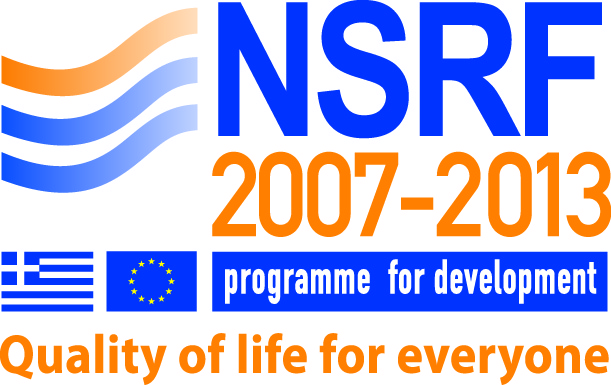Please use this identifier to cite or link to this item:
https://olympias.lib.uoi.gr/jspui/handle/123456789/39516Full metadata record
| DC Field | Value | Language |
|---|---|---|
| dc.contributor.author | Kalyvioti, Aikaterini | en |
| dc.date.accessioned | 2025-10-15T10:51:42Z | - |
| dc.date.available | 2025-10-15T10:51:42Z | - |
| dc.identifier.uri | https://olympias.lib.uoi.gr/jspui/handle/123456789/39516 | - |
| dc.rights | Default License | - |
| dc.subject | Autism | en |
| dc.subject | Virtual reality | en |
| dc.subject | Delphi study | en |
| dc.title | Design guidelines for Virtual Environments for individuals with Autism Spectrum Disorders: a Delphi Study | en |
| dc.type | doctoralThesis | en |
| heal.type | doctoralThesis | el |
| heal.type.en | Doctoral thesis | en |
| heal.type.el | Διδακτορική διατριβή | el |
| heal.classification | Autism Spectrum Disorders | en |
| heal.dateAvailable | 2025-10-15T10:52:43Z | - |
| heal.language | en | el |
| heal.access | free | el |
| heal.recordProvider | Πανεπιστήμιο Ιωαννίνων. Σχολή Επιστημών Αγωγής. Παιδαγωγικό Τμήμα Δημοτικής Εκπαίδευσης | el |
| heal.publicationDate | 2021-08-05 | - |
| heal.abstract | VR technologies and their qualities (affordances) are viewed as a unique tool with significant potential benefits for supporting (intervening/training) individuals with autism. Researchers have developed several virtual environments and applications for the training of numerous skills (e.g., social, communication, daily living/functional, behavioral, emotional, sensory, and motor skills). Currently, there are no universal or specific design guidelines for developing such virtual environments. However, there have been a few attempts at their description that are primarily based on VR’s affordances. Thus, we attempted to provide a comprehensive framework of design guidelines for virtual environments that target the training of skills of individuals with autism. The proposed design guidelines were organized per four autism profiles (i.e., mild ASD with and without ID, severe ASD with and without ID) and targeted training skills. Each design guideline had 4 (+1) components/elements, depending on whether all five reached the set consensus level. Those components/elements were the VR combination, i.e., the VR system, VR affordance, VR learning affordance, VR task/activity, and the individual’s specific skill set (ISSS). The four VR-related components/elements clearly expand and differentiate the current, somewhat broader approach of an affordances-based design for these virtual environments. The fifth component/element of ISSS (i.e., the set of skills that will help the user gain benefit from the administered virtual environment) highlights the user-centered approach of these proposed design guidelines. Thus, while having an expanded affordances-based and user-centered approach, we employed a three-round e-Delphi study (which has its basis in the classical Delphi). The expert panel consisted of international researchers, academics, and scholars from the research fields of autism and VR. Additionally, each questionnaire was pilot-tested, and a summary of the results from each round was provided to the experts. In Round 1, 22 experts responded to our invitation and completed the first questionnaire, which included both open-ended and demographic questions. Their answers were analyzed (content analysis) and led to the development of Round 2’s questionnaire, where 13 experts participated in that round. After filtering Round 2’s answers, the questionnaire for the last round was developed, and eight experts participated in Round 3 of the study. In this final round, a minimum of 75% consensus was reached for 47 out of the 65 suggested design guidelines (statements). We present all 47 suggested guidelines, along with an overview of each one by clinical profile. Thus, we follow a three-tier approach regarding the study's conclusions, i.e., the framework for the design guidelines (VR combinations & ISSS), the general design guidelines per (clinical) profile, and lastly the specific 47 design guidelines per profile and targeted skill. Lastly, given the broad scope of our study and the absence of empirical application of the suggested design guidelines, we propose that future work address these two main limitations by testing the proposed guidelines and further exploring them for the educational benefit of individuals with autism. | en |
| heal.advisorName | Mikropoulos, Tassos Anastasios | en |
| heal.committeeMemberName | Morfidi, Eleni | en |
| heal.committeeMemberName | Tzimogiannis, Athanasios | en |
| heal.committeeMemberName | Tripodis, Yorghos | en |
| heal.committeeMemberName | Beekman, Leah | en |
| heal.committeeMemberName | Koutromanos, Georgios | en |
| heal.committeeMemberName | Soulis, Spyridon-Georgios | |
| heal.academicPublisher | Πανεπιστήμιο Ιωαννίνων. Σχολή Επιστημών Αγωγής. Παιδαγωγικό Τμήμα Δημοτικής Εκπαίδευσης | el |
| heal.academicPublisherID | uoi | el |
| heal.numberOfPages | 342 σ. | el |
| heal.fullTextAvailability | true | - |
| Appears in Collections: | Διδακτορικές Διατριβές - ΠΤΔΕ | |
Files in This Item:
| File | Description | Size | Format | |
|---|---|---|---|---|
| PhDKalyvioti_FINAL 2021_OLYMPIAS_UPLOAD_COMBINED.pdf | 9.47 MB | Adobe PDF | View/Open |
Items in DSpace are protected by copyright, with all rights reserved, unless otherwise indicated.




